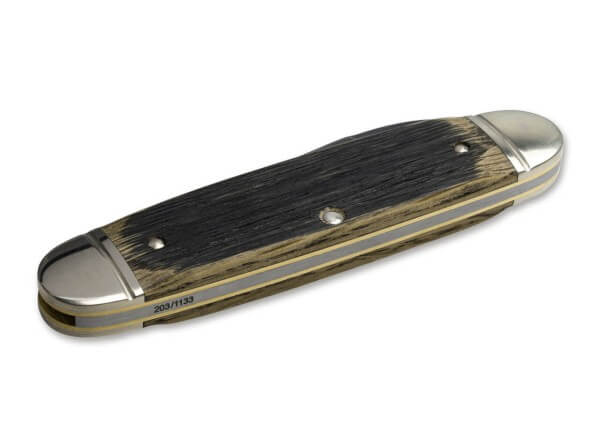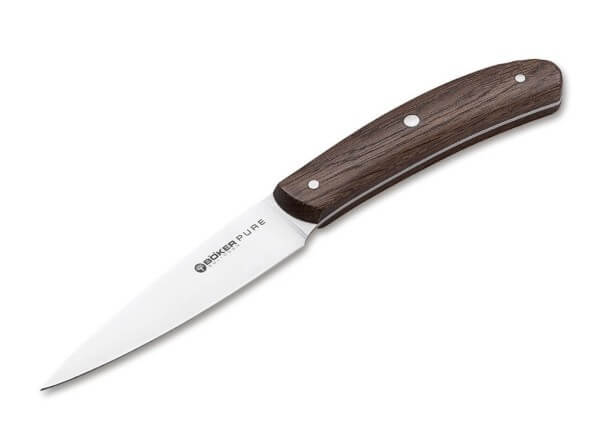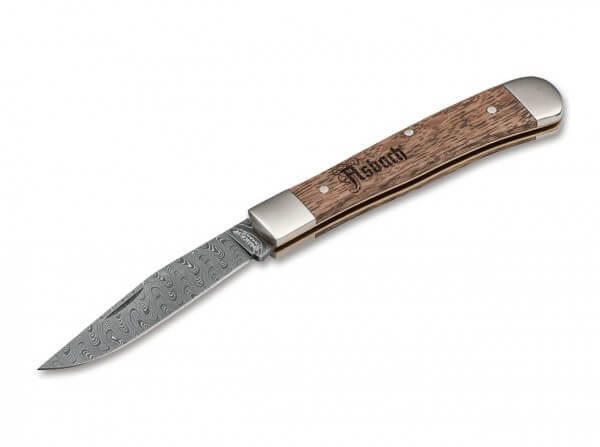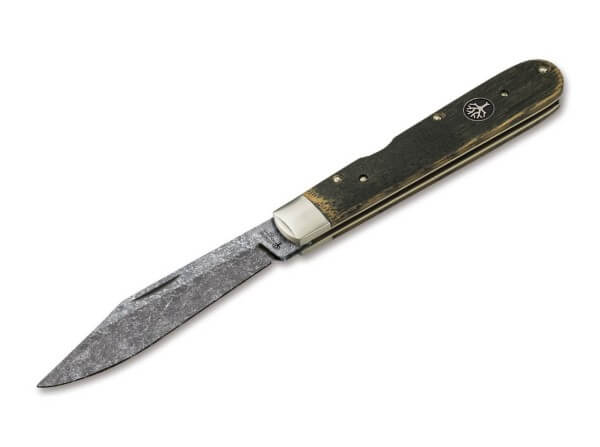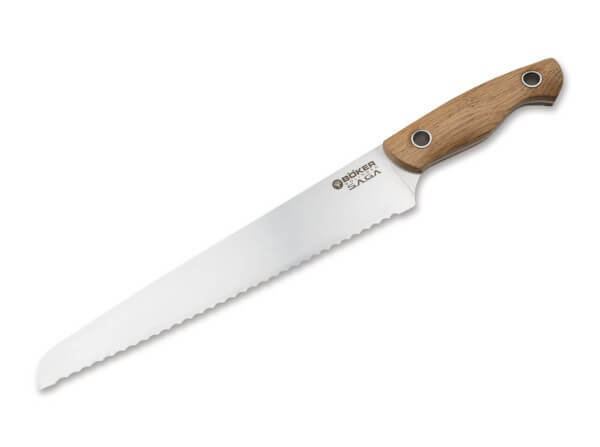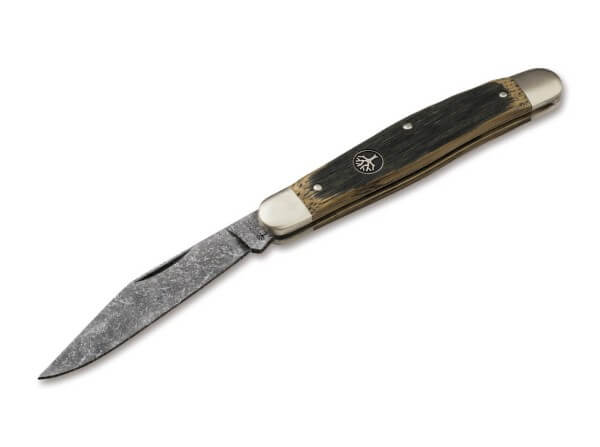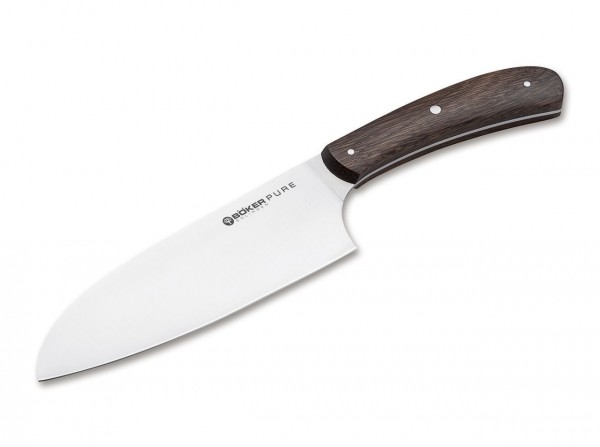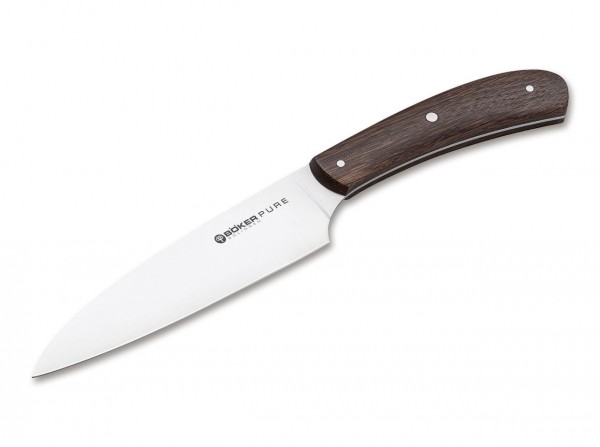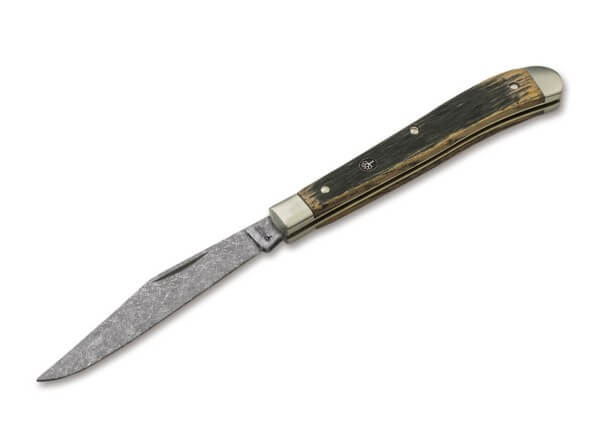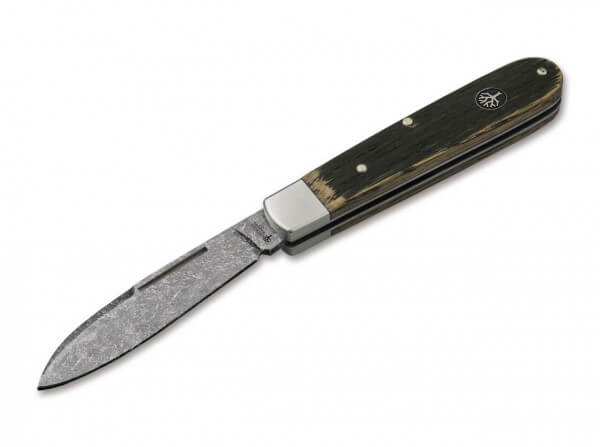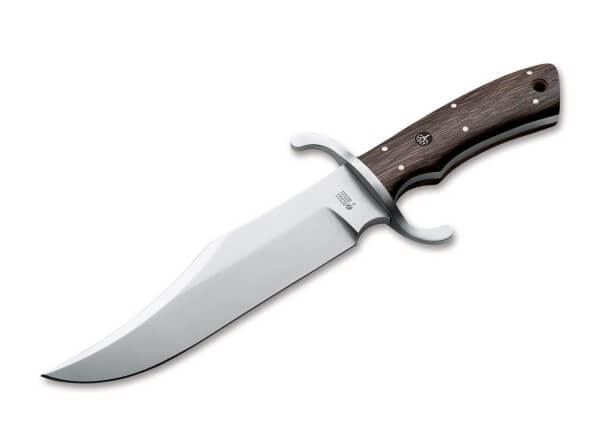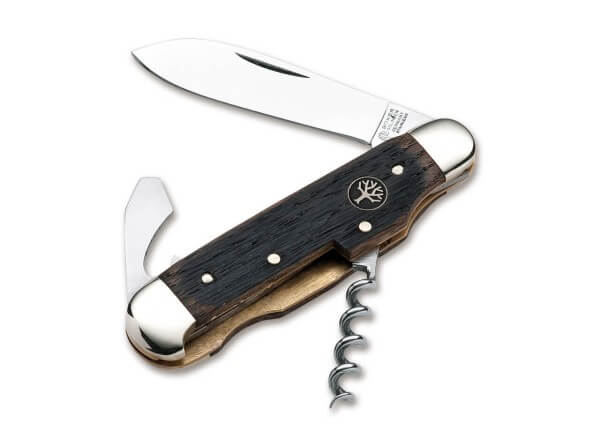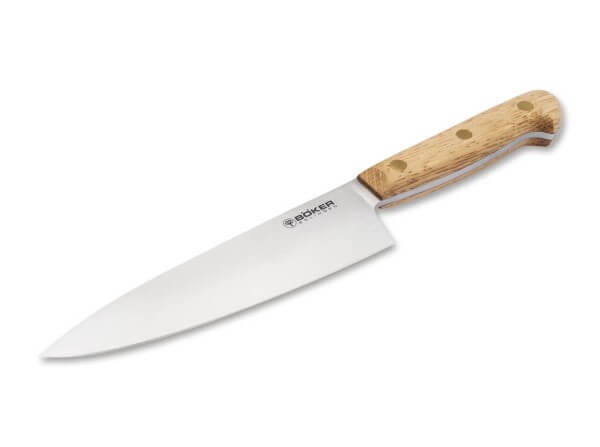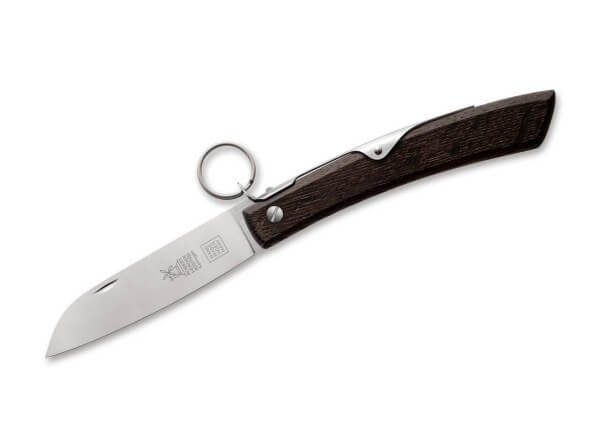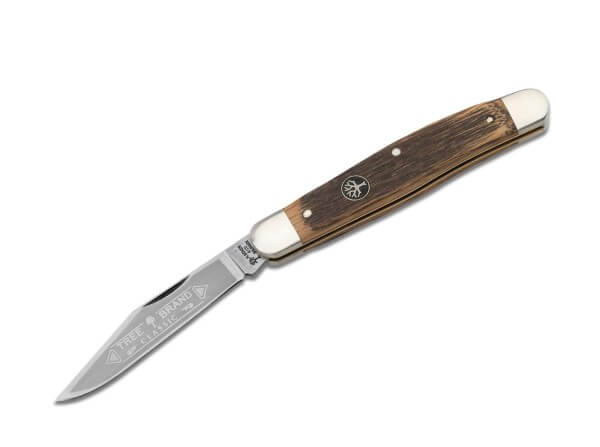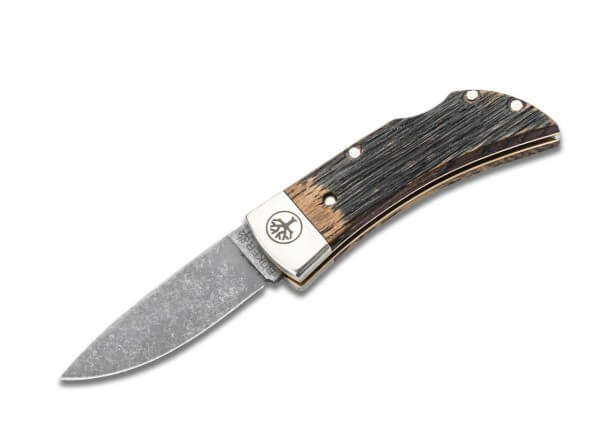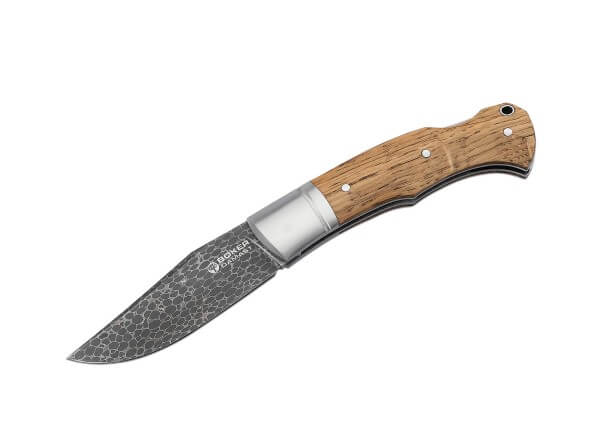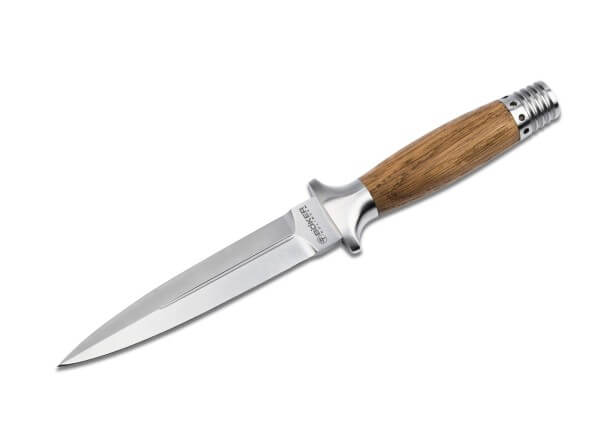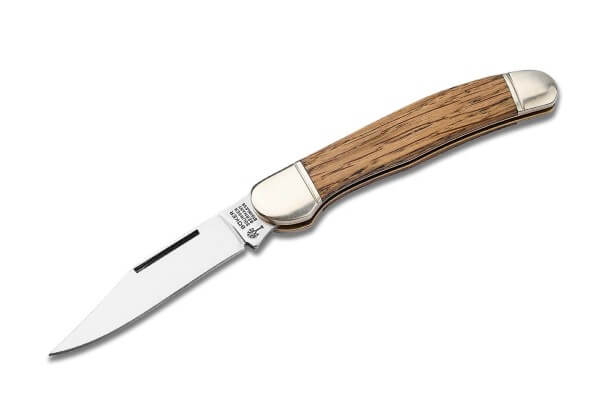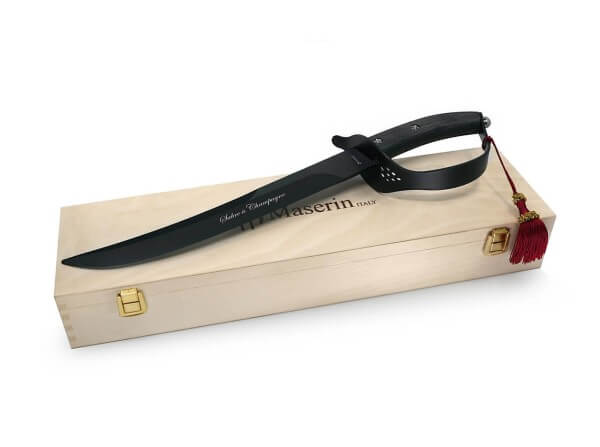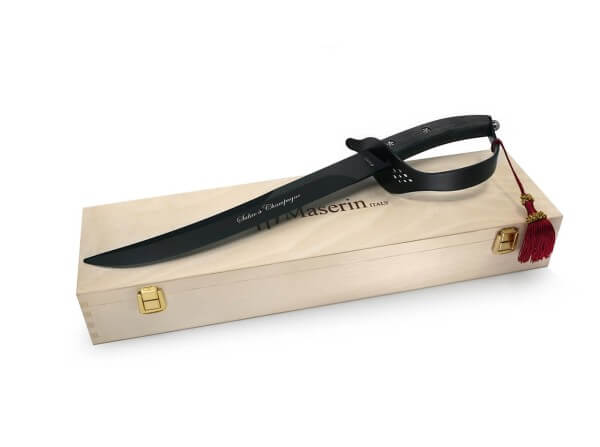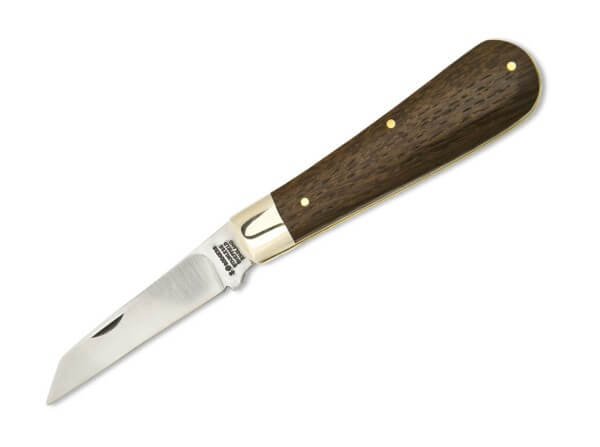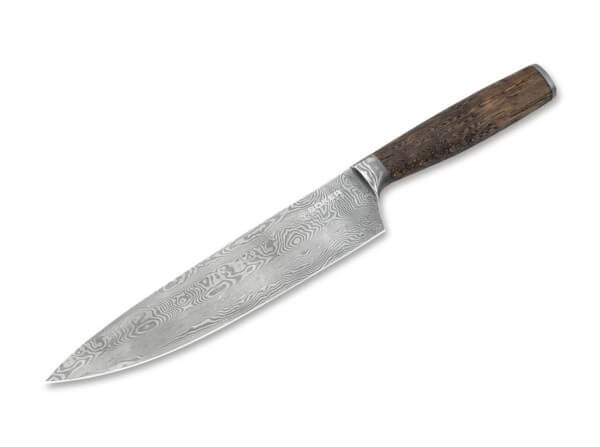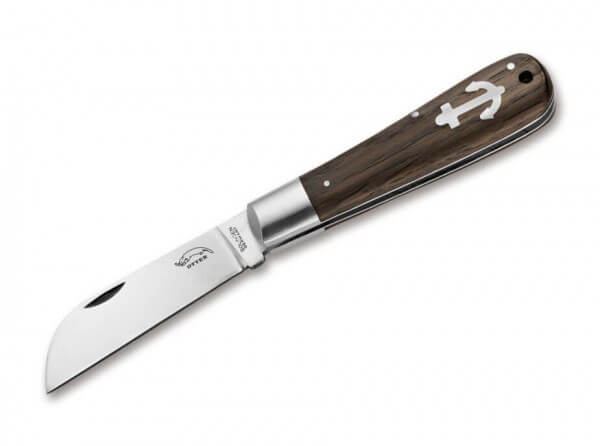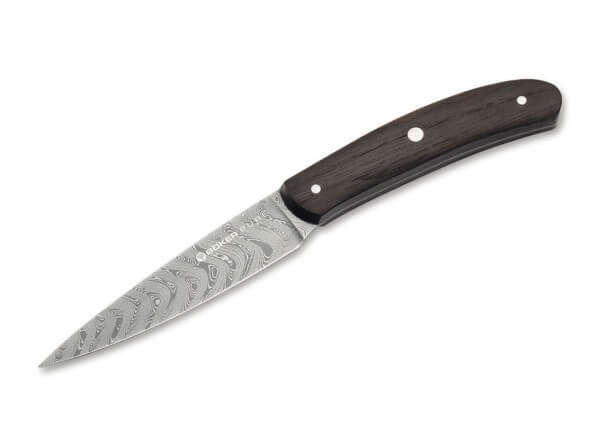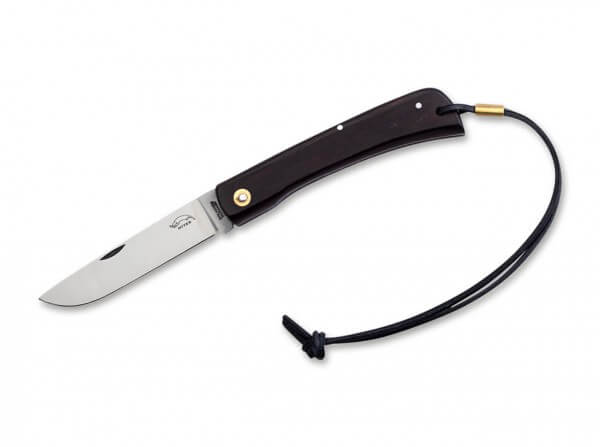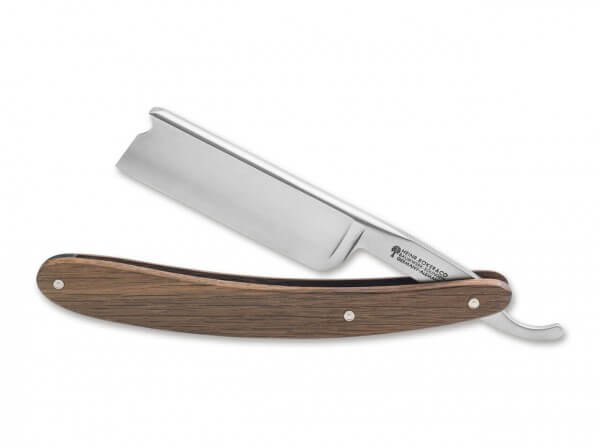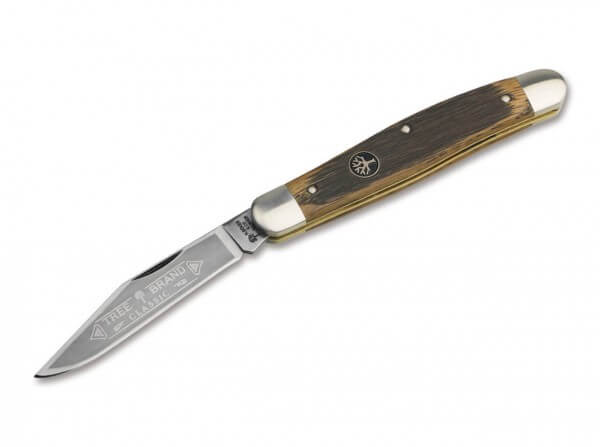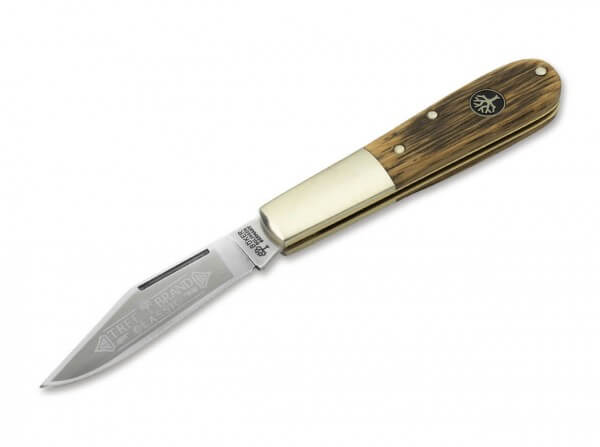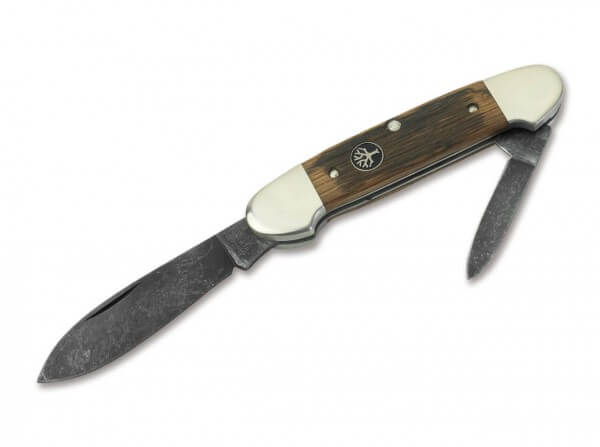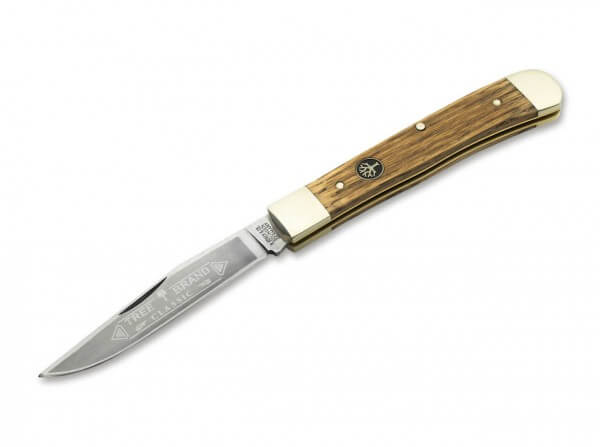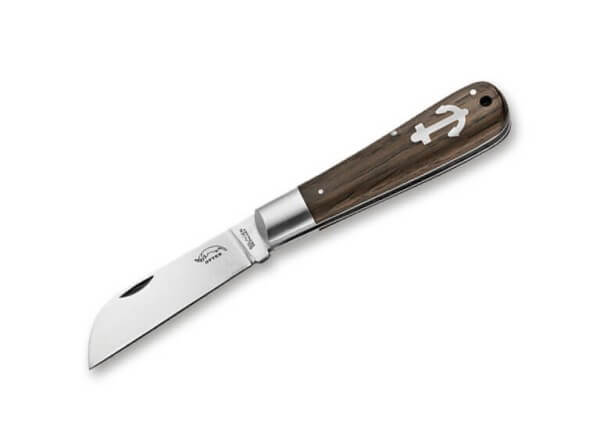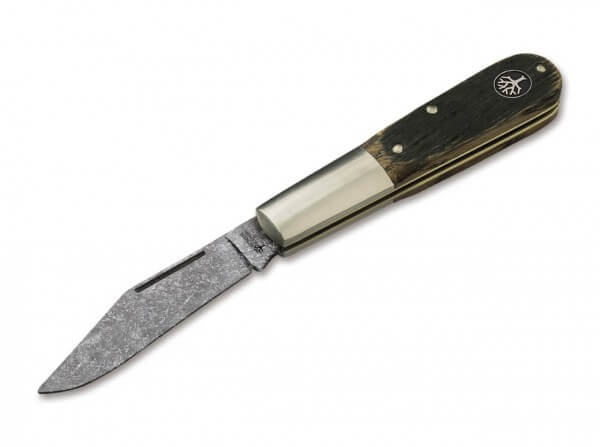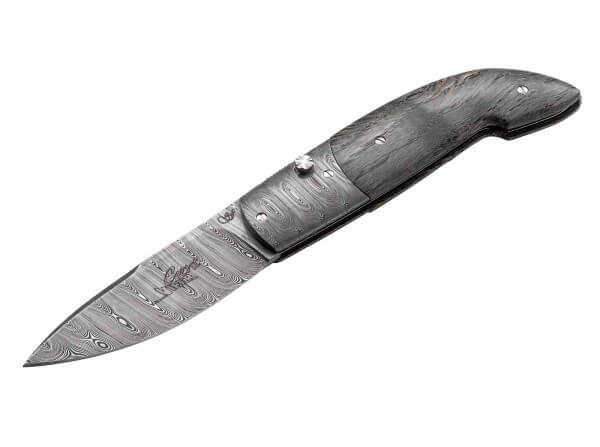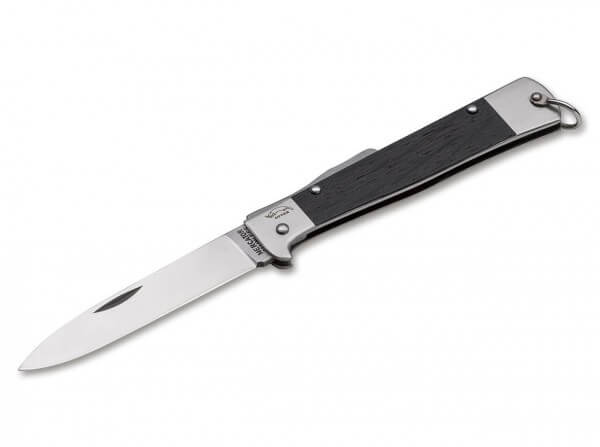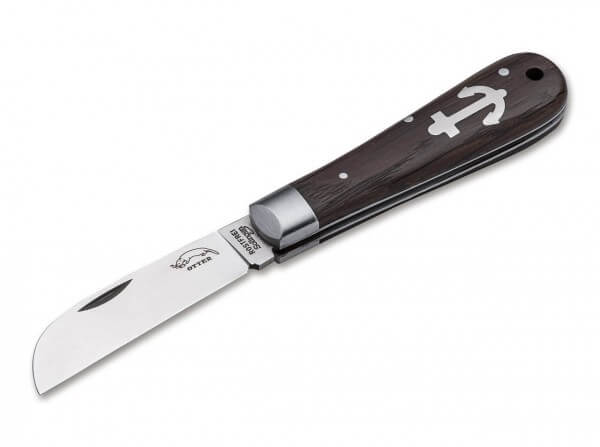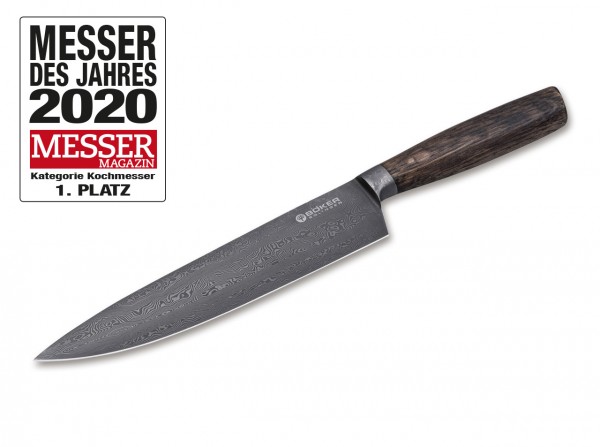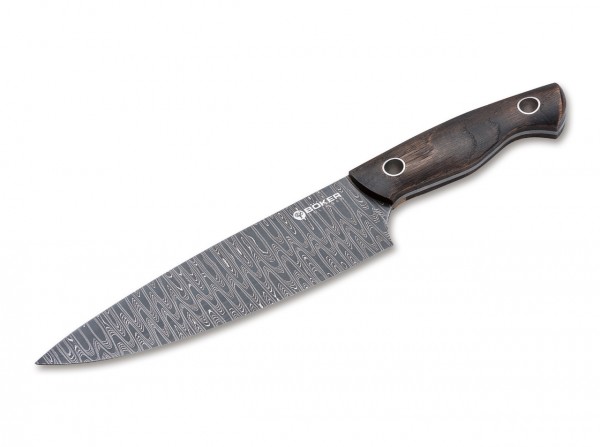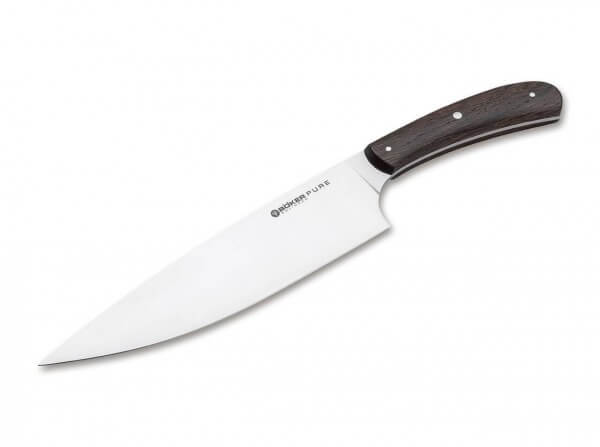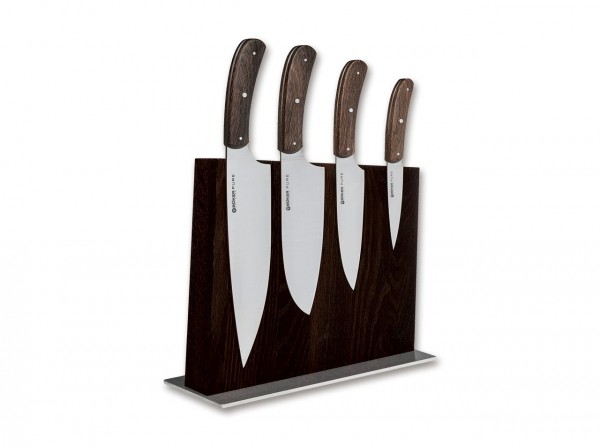Oak Wood
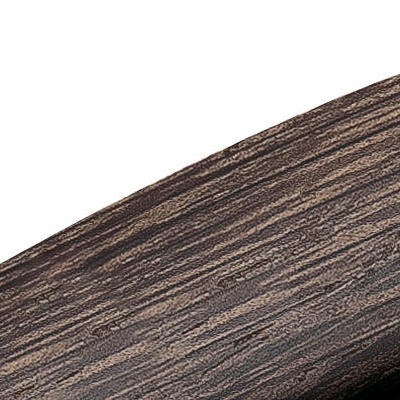
In knife production, oak wood is used to make high-quality handle scales. The oak species used in Europe for the production of knife handle scales are usually denoted by their Latin names, Quercus robur and Quercus petraea.
The Oak is perhaps the iconic tree of Central Europe. Thanks to its beautiful shape and longevity, mankind has always ascribed special meaning to this species. Ancient Germanic tribes held their tribal council underneath oak trees, and even the Romantics of the 19th century considered the oak to be the German national tree. The oak is indigenous to North America and Europe. Its trunk can grow 20 to 30 meters tall with a branch-free height of approximately ten meters. Oaks can reach a diameter of 60 to 90 centimeters. The dry density of the wood, which means the density with a moisture content of 0%, lies between 0.48 g/cm³ and 0.87 g/cm³, which is high to very high. Oak wood has very little shrinkage and is easy to work with and process.
Due to its strong tendency towards warping and cracking, oak needs to be thoroughly dried before processing. In its dry state, it is easy to handle. In order to prevent cracks, thin oak should always be pre-drilled before applying screws or nails. Oak heartwood is very weather-resistant. Oak sapwood is gray and between two and eight centimeters wide. The coloring of the heartwood changes with age. The early wood is gray/brown or reddish brown but darkens with age until the dark brown coloring generally associated with oak wood is reached.
The pores of the early wood are coarse, while late wood has finer pores. The medullary rays of oak wood are approximately one millimeter wide and can be several centimeters long. They are scattered randomly across the entire cut surface. Thanks to its excellent resilience, oak is often used in exterior and interior construction, in boatbuilding and in the production of a wide range of wooden items. Its beautiful coloring and pretty patterns make oak wood an excellent choice for paneling, veneers and furniture.


